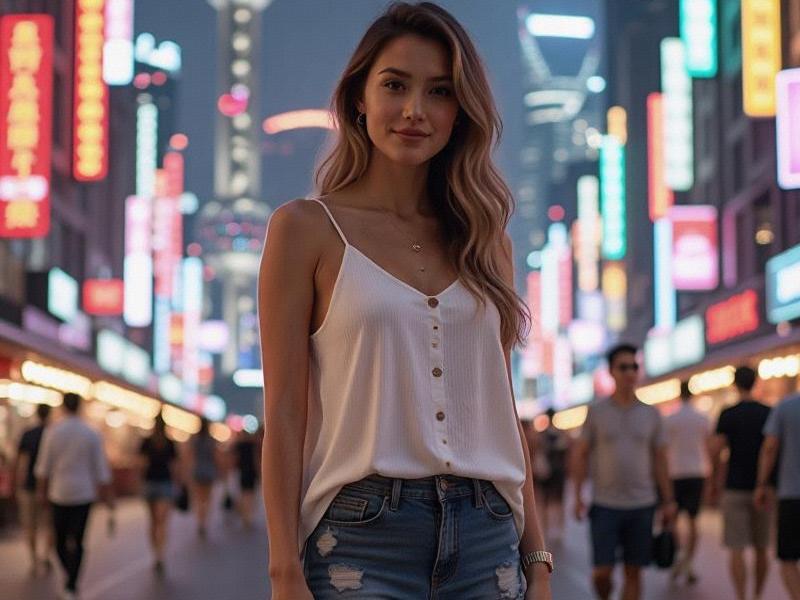
The morning rush at Jing'an Temple metro station offers a visual feast of Shanghai womanhood - office workers in tailored qipao-inspired dresses tapping smartphones, artsy types in avant-garde separates sipping oat milk lattes, and university students sporting both Hanfu accessories and Y2K revival makeup. This vibrant tableau represents more than just fashion; it's the frontline of China's ongoing beauty revolution, with Shanghai women as its most articulate architects.
Historically called the "Paris of the East," Shanghai has reclaimed its position as Asia's most dynamic beauty capital, but with distinctly local characteristics. Data from 2024 shows Shanghai residents spend 42% more on cosmetics per capita than Beijing counterparts, while local beauty app Xiaohongshu reports Shanghai users post 3.8x more skincare routines than the national average.
What makes Shanghai's beauty culture unique is its hybrid nature. Walk through the French Concession and you'll witness this synthesis: a third-generation Shanghainese woman might combine a delicate pearl hairpin (nod to 1930s Shanghai glamour) with Korean glass skin techniques and French pharmacy sunscreens. This isn't mere imitation - it's cultural alchemy.
上海龙凤419贵族 "Shanghai girls treat beauty like a second language," says Zhou Xinyi, editor-in-chief of Vogue China. "They code-switch effortlessly between traditional Chinese elements and global trends." This fluidity manifests in surprising ways. At the newly opened SKP South Bund mall, the Gucci counter reports strong sales of their jade-green eyeliner (developed specifically for the Chinese market), while nearby, queues form for traditional Chinese medicine (TCM) facial treatments at boutique spa "Dragonfly."
The economic implications are staggering. Shanghai's beauty market grew 18% year-on-year in 2024 to reach ¥87 billion ($12 billion), with local brands like Florasis and Chando gaining significant market share against international giants. The municipal government has taken notice, establishing the Huangpu District as a "Beauty Innovation Cluster" with tax incentives for cosmetic R&D centers.
Perhaps most interesting is how Shanghai women are rewriting beauty rules:
上海贵族宝贝sh1314 1) The "No-Makeup Makeup" revolution: Using advanced skincare to achieve luminous complexions that need less foundation
2) Hanfu fusion: Incorporating subtle traditional elements into contemporary outfits
3) Tech-enabled customization: Apps that analyze facial symmetry and suggest personalized styles
上海私人外卖工作室联系方式 Education plays a key role. Shanghai's Donghua University now offers China's first undergraduate program in Cosmetic Science, while the Shanghai Institute of Visual Arts has pioneered courses in "Cultural Aesthetics for Beauty Professionals."
The movement has its icons. Figures like actress Ni Ni and Olympic gold medalist Zhang Yufei represent a new ideal - women who embody both traditional grace and modern ambition. On social media, Shanghai-based influencers like LunaShanghaiStyle demonstrate how to pair cheongsam with sneakers or style a bob cut with Song dynasty hairpins.
Challenges persist. The pressure to conform remains intense, and Shanghai's beauty standards still favor fair skin. Yet there are signs of change. Darker foundation shades are appearing in stores, while campaigns featuring diverse body types gain traction.
As night falls on the Bund, the city's beauty philosophy becomes clear in the glowing faces reflected in skyscrapers - women embracing both their heritage and future, crafting an aesthetic that's distinctly Shanghainese yet universally appealing. In doing so, they're not just wearing makeup; they're writing the next chapter of Chinese cultural identity.
